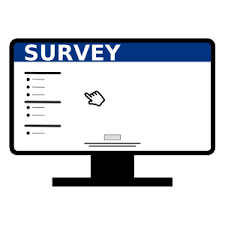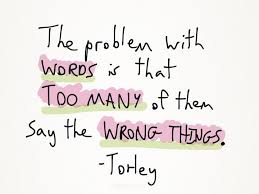More Consumers Confused by Role of CFPB than Reverse Mortgage Ads

The Consumer Financial Protection Bureau (CFPB) recently conducted a focus group interviewing nearly 60 age-eligible homeowners in Chicago, Los Angeles and Washington D.C. who were shown reverse mortgage ads, and released results about a week ago showing the ads to be either “inaccurate, confusing or misleading.”
According to HECM World, an industry online publication, “the study drew from 97 unique reverse mortgage ads from television, radio, internet and print media.” Also saying that, “Some found it difficult to comprehend that the program is a loan with fees and interest which must ultimately be repaid.”
Now, before I begin to talk about this specific focus group and its conclusions, because I spent a large part of my career as a qualitative researcher, I think it’s important to understand what focus groups are… and what they aren’t.
Focus groups are a form of qualitative, as opposed to quantitative research, which is the type of research associated with conducting surveys. Quantitative research employs statistical, mathematical or computational techniques… it uses mathematical models to achieve measurable outcomes.
Qualitative research, on the other hand, produces information that can only be applied to the particular cases studied, and any more general conclusions are hypotheses only. Quantitative methods are then used to verify which of such hypotheses are true when viewing the audience as a whole.
For example, let’s say that we were to convene a focus group of 12 people who all purchased the same model year of a given automobile… and for example’s sake, let’s use the car my wife and I purchased last summer, the Ford Fusion Energi, which is a plug-in hybrid that gets relatively high gas milage. Some of the ads for the Fusion Energi proclaim the car to be able to get 105 MPG.
So, now we have 12 Fusion Energi owners seated around our table, and a group moderator is there to facilitate the discussion among the group’s members, while behind the one-way mirror, Ford executives are watching in an effort to discover how satisfied owners are with the car after one year.
Now, let’s assume that half of the group’s members report that they are “highly satisfied” and the other half reports that they are not “highly satisfied’ with their purchase. And among those not “highly satisfied,” half said they were “somewhat satisfied,” and the other half said they were “less than satisfied.”
What should that mean to the Ford executives watching the discussion? Should they conclude that 50 percent of consumers across the country will be “highly satisfied” owners of their car? No. Should they conclude that 25 percent of consumers will be “somewhat satisfied,” after purchasing the car? No. Nor should they conclude that 25 percent of consumers are “less than satisfied” with the Ford Fusion Energi.

Those types of conclusions are numerical… they are quantitative results, and qualitative studies like the focus group described in our example cannot produce quantitative results. The reasons are many and should be easy to understand.
First of all, you have to consider how the group’s members were selected. For example, what kind of car were they driving prior to purchasing their new Ford Fusion Energi? Were they driving a Toyota Prius… or, as in our case, did they trade in a Chevy Suburban when they bought their new Fusion?
We had a Suburban for about eight years before switching to the gas-efficient Fusion, so we went from spending about $400 or more a month on gas to spending maybe $50. That’s a huge drop in monthly expenditure, obviously, so it’s likely that our level of satisfaction would be higher with our new car than someone who had been driving another fuel efficient vehicle.
Another factor that needs to be considered is how the group’s members were recruited… as in, were they paid to attend the group? Were they chosen as invitees because they were actively shopping for a reverse mortgage, or was their level of awareness about reverse mortgages low or even nonexistent prior to attending the focus group? Did any of the group’s members already have a reverse mortgage, or did they know of others who have experience with the product?

When people are paid to attend a focus group, as they often are, they have a tendency to offer opinions on topics simply because they’re being paid to offer their opinions. Were they not being paid to offer those opinions, they may not even have them… perhaps they’ve never even considered the questions before being asked in the focus group setting.
Then there’s the dynamics of the group itself. Imagine what it feels like to watch the group’s moderator pose a question, and then go around the table asking the members for their response. By the time he or she comes to you, how can you not say something in response to the question? And if the responses to the question have all been in one direction, it can be hard for some people to say something that’s contrary to what others in the group have said, while other personality types might cause their response to be contrary, simply because their nature is to be a contrarian.
Years ago, my firm was hired by one of the largest Health Maintenance Organizations (HMOs) to produce a documentary style video program explaining the health plans background and benefits to prospective new members. The end product was almost 30 minutes long and the HMO’s management thought it might be too long for people to watch, so they convened a series of focus groups to see how people reacted to the content and the length. I was behind the one-way mirror watching the group discussion, as were members of the HMO’s management team.
At first, one of the HMO executives wanted to tell the group moderator to ask the group’s members if they thought the video was “too long,” even though no one had mentioned the length after being shown the video. I objected, saying that doing so was the equivalent of “leading the witness,” in a courtroom trial.
And when, over my objection, they asked the group at the end of the session whether they thought it too long, a few commented that yes, they thought it should be shorter. “Ah ha,” was the response from the HMO executive who had also thought it was too long. He was sure the video needed to be cut down to just 15 minutes.
I asked to test the hypothesis that the video was too long by asking that another focus group be conducted, but that its members be restricted only to those who were actively considering a new health plan at work, as opposed to just people who were eligible to enroll in the plan.
This time again, no one brought up the length during the discussion following the showing of the video, and at the end, the moderator was instructed to ask the group how long they thought the video was. The longest guess was 15 minutes… not one person said that they thought the video was almost 30 minutes in length.
The reality was that because this time the group’s members were in the process of choosing a health plan, they weren’t bored by the content, and when something is interesting, you don’t mind watching it… as opposed to when something isn’t of real interest to you, even 30 or 60 seconds can seem boring and too long.
In addition, the HMO executive who was sure the video was too long, had been involved in the production process, and therefore had watched its many iterations along the way. And after watching any video maybe 20-30 times, it’s going to feel too long… as opposed to seeing it for the first time.

The moral of the story is that focus group research, unless properly used, structured and interpreted can lead to erroneous and even dangerous conclusions. Even if half the group had said the video was too long, that would not have meant that 50 percent of those that would see it would feel the same way. To know something like that, you would have to conduct a well-designed quantitative survey.
The simple fact is that you can never accurately project the results of a focus group on a larger population. That’s Market Research 101, as it were… and everyone in the field would tell you the exact same thing.
For the CFPB to publish the results of their focus group as being an accurate conclusion representative of the larger audience of consumers over the age of 62, is irresponsible, and more than that, it leads me to believe that they used the focus group to validate their preconceived notions about reverse mortgage advertising.
In other words, they already thought the ads to be misleading, so they found 60 people, some of whom agreed with their opinion.
What does that mean? Well, in the case of reverse mortgages… almost nothing.
For one thing, all ads can be seen as misleading to some degree. We’ve had our Ford Fusion Energi for a year now, and we’ve never gotten 105 MPG, as the ads proclaim is at least possible… the best we’ve done is about 85 MPG… and it clearly depends on how you drive it, how fast you accelerate, whether you’re running the air conditioning, and how often you plug it in. Some trips, we only get 50 MPG, because I have a tendency to drive way over the speed limit especially late at night in the middle of nowhere.
Does that mean that I would say the ads were misleading? I could argue yes, and I could say no. However, in our specific case, we’re very happy with the car and its MPG regardless.
The process of getting a reverse mortgage is multifaceted and it takes place over at least 5-6 weeks, and more often than not, over several months. During that process, applicants are required to attend a 1-hour counseling session with a certified HUD counselor who explains a great deal about the pros and cons of reverse mortgages, and homeowners are asked questions to make sure they understood what the counselor explained during the session, which can be face-to-face or on the phone.
In addition, as is the case with all mortgages, there’s an enormous amount of paperwork involved. The application alone requires something like 60 signatures by the borrower. And that’s just the application for a reverse mortgage… there’s also the final documents that all need to be initialed and/or signed before the reverse mortgage can be put in place.
During the many weeks involved in the process of getting a reverse mortgage, most homeowners talk to their loan officer at length, asking numerous questions, and many also talk to their own trusted advisors and their children, among others… in addition to conducting their own research online, etc. etc.
What’s interesting is that none of that applies when taking out a traditional mortgage. When you do that, or when you refinance your mortgage presumably one at a lower rate, there’s no mandatory counseling session involved to ensure that you understand what you’re doing.
When you take out a 30-year mortgage, regardless of your age, no one is obligated to tell you the pros and cons involved, nor is anyone likely to tell you about the alternative of getting a reverse mortgage. But, when you want a reverse mortgage… the law says you have to be told repetitively about the alternative of getting a traditional loan.

Why isn’t the CFPB concerned about that little disparity?
Last year, I got a call from a mortgage banker. She reads my blog and wanted me to know that she had helped an 80 year-old man refinance his mortgage at a lower rate. She thought I’d be pleased at how she had helped the older gentleman lower his mortgage payment.
“Did you tell him about a reverse mortgage?” I asked her. “No,” she replied. “We don’t offer those,” she offered.
I replied that I thought what she’d done should be illegal.
An 80-year old taking out a 30 year mortgage in order to reduce his monthly payments is at least potentially destined to have problems paying those payments assuming he lives long enough. He’s certainly not likely to live to 110, when the loan would be paid off, I’ll tell you that.
So, why doesn’t the law require that the 80 year-old at least be told that he could take out a reverse mortgage in order to reduce the amount of his monthly payments? With a reverse mortgage, he can still make monthly payments, but should he run into financial difficulties at some point down the road, he’d have the option of not making any monthly payments whatsoever, so he could never be forced to sell his home or lose it to foreclosure because he didn’t make his monthly mortgage payments.
The CFPB and others in the media are quick to point out that with a reverse mortgage, the homeowner still has to pay his or her property taxes and insurance… but that’s true with ANY mortgage… it’s not unique to reverse mortgages. With a reverse mortgage, you still own your home… so you still have to pay your property taxes, insurance and normal maintenance… just as you would with any FHA loan or traditional mortgage.
Look, a reverse mortgage is just a mortgage. The interest rates are comparable to other conventional mortgages, and just like other loans, you can make monthly payments of principal and interest… or you can decide to make interest only payments, or even choose to make no payments, in which case the interest will accrue, and does not have to be repaid until you sell the house, or die. Why isn’t that a very good thing for anyone, especially for those over 62?
Pay it if you want to… don’t pay it if you don’t. It’s all up to you. I’m only 54, but I sure do wish I had that kind of mortgage instead of the traditional loan I have now that makes my monthly payment mandatory no matter what.

Will the CFPB Provide Details About its Focus Group?
Apparently not. In yet another stunning lack of transparency, the CFPB has refused to release any details about their focus group of 60 consumers that led them to conclude that the industry’s ads are “misleading, ambiguous or difficult to understand.”
From a Press Release issued by Reverse Focus, an industry publication…
In a press call last week industry representatives asked if the Bureau would make the ads used in the study available. The terse reply: they will not. Peter Bell, president and CEO of NRMLA said “The CFPB was asked on the press call if it would make the ads it reviewed available to the industry, so we can analyze and learn from them. Their response was that they have no plans to do so.”
Well, not much surprise there, none of the government regulatory agencies have been models of transparency throughout the Obama Administration. But the CFPB should be different.
On the CFPB’s own website, under “About us,” it states…
“The Consumer Financial Protection Bureau (CFPB) is a 21st century agency that helps consumer finance markets work by making rules more effective, by consistently and fairly enforcing those rules, and by empowering consumers to take more control over their economic lives.”
And then, under the heading, “Educate,” it states…
“An informed consumer is the first line of defense against abusive practices.”
And I could not agree more… in fact, I have been a vocal supporter of the CFPB ever since now Senator Elizabeth Warren introduced the idea of creating the government agency over five years ago. But, Senator Warren has been the poster child for transparency, and it’s difficult to imagine that she would be in favor of the agency playing games with the results of its studies.
I mean, who benefits from the agency not releasing the details from the focus group in question? One might even assume that the only way the study could possibly benefit anyone would be to release the details so that the ads in question could be changed, if they are truly causing a problem among consumers.
No, the only group to benefit from not releasing the study’s details is the CFPB. Without the details it’s difficult to say anything about the study except that it succeeded in fueling more negative press about what is a very important financial product for homeowners over age 62.
Is that the CFPB’s goal? To avoid criticism and publish inflammatory headlines that scare people? I don’t think that’s what most consumers believe to be the agency’s mission.
I personally have spoken with hundreds of homeowners about the CFPB’s role… and hundreds about reverse mortgages… and I have to tell you that based on this and other actions taken by the relatively new government agency, there are far more consumers confused by the role of the CFPB than there are those confused by reverse mortgage ads.
Mandelman out.






